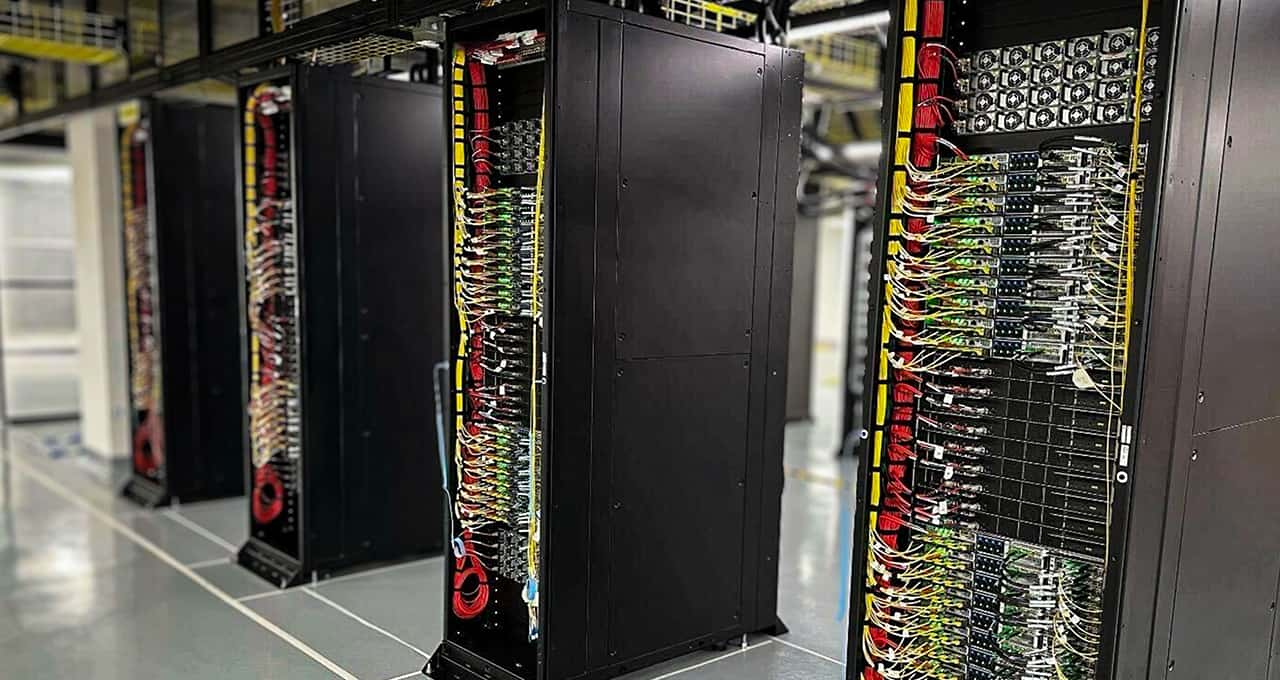At SpaceX’s Starbase facility in Texas, Nvidia founder and CEO Jensen Huang personally delivered the company’s recently released DGX Spark AI supercomputer to Elon Musk. The meeting occurred as SpaceX got ready for the eleventh test of its Starship rocket, according to a blog post the chipmaker posted. Huang described the occasion as “delivering the smallest supercomputer next to the biggest rocket.” In the interview with the CEO of SpaceX, Huang described how Spark advances that goal and related the tale of delivering the first DGX machine to OpenAI.
Meeting Between Musk and Huang
Before meeting Tesla CEO Elon Musk in the cafeteria, Jensen Huang arrived at the SpaceX location surrounded by engineers and employees. The blog claims that the two had a brief conversation regarding Nvidia’s early partnership with OpenAI and how the new DGX Spark carries on that goal. The system can execute models with up to 200 billion parameters locally, marking a significant advancement in portable AI processing capacity.
Nvidia’s DGX Spark and its Features
With a performance of up to one petaflop, the DGX Spark is a small AI supercomputer. Developers, academics, and artists who require powerful processing outside of conventional data centres are the target audience. Approximately 1.2 kg in weight, it combines portability with cutting-edge hardware, including the Nvidia GB10 Grace Blackwell Superchip for high-speed AI processing, 128 GB of unified memory for seamless model training and inference, Nvidia ConnectX networking and NVLink-C2C for quick data transfer, NVMe storage, and HDMI output for direct visualisation.
It comes preloaded with Nvidia’s entire AI software stack, which includes frameworks, libraries, pretrained models, and NIM microservices, allowing users to create chatbots, vision agents, and creative AI tools locally.
In order to introduce DGX Spark systems to the market and transform desktop computers into AI-ready workstations, Nvidia has teamed with companies such as Acer, ASUS, Dell Technologies, HP, Lenovo, GIGABYTE, and MSI. Ollama in Palo Alto, NYU Global Frontier Lab, Zipline, Arizona State University, and the studio of artist Refik Anadol are examples of early adopters. According to the company’s announcement, DGX Spark systems will be accessible worldwide via partner channels and Nvidia.com as of October 15.
|
Quick Shots |
|
•Nvidia CEO Jensen Huang •Delivery coincided with SpaceX’s •Huang called it “delivering the •Nvidia GB10 Grace Blackwell •Preloaded with Nvidia AI software •Developers, researchers, artists •DGX Spark Combines portability |

